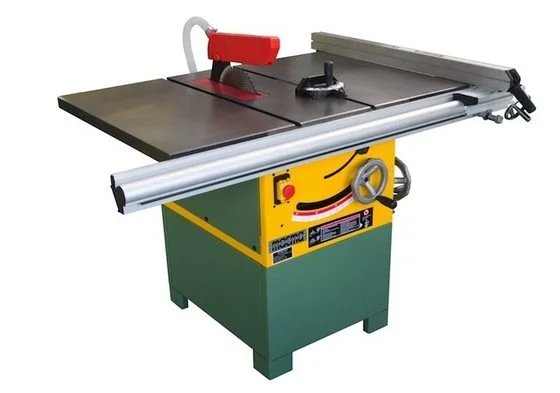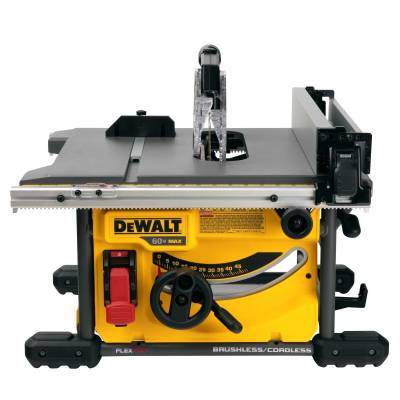When it comes to woodworking, having the right saw is really important. Two common saws used are the arbor saw and the table saw. They have their own special features and are meant for different cutting jobs. But they are quite different from each other.
The main difference between an arbor saw and a table saw lies in their size and intended use. Arbor saws are smaller and portable, ideal for intricate and smaller cuts. In contrast, table saws are larger and stationary, better suited for cutting larger and thicker pieces with precision.
In terms of how they look and work, arbor saws are usually smaller and easy to move around, while table saws are big and stay in one place. Table saws are better at cutting large and thick pieces, while arbor saws are better for cutting smaller and detailed pieces.
Today, we’ll go over the distinctions between an arbor saw vs table saw to help you choose the right one for your specific needs. Keep reading to find out which one suits you best.
What is Arbor Saw:

An arbor saw, often referred to as a circular saw or a handheld circular saw, is a versatile power tool commonly used in woodworking and construction.
Its primary components include a circular blade with sharp teeth mounted on an arbor, an ergonomic handle, and a motor. Arbor saws come in various sizes, with the most common blade diameters ranging from 6 to 10 inches.
The key feature of an arbor saw is its portability and ease of use. Woodworkers and carpenters appreciate its maneuverability, allowing them to make precise straight cuts or bevel cuts with relative ease.
It’s an essential tool for cutting various materials, such as lumber, plywood, MDF, and even metal, depending on the blade’s type.
Arbor saws are available in corded and cordless versions, offering flexibility for different job sites. They’re commonly used for tasks like framing, cutting sheet goods, and making crosscuts or rip cuts.
Safety precautions, including wearing appropriate eye and ear protection, are crucial when operating an arbor saw due to its potential for generating dust and noise. Overall, the arbor saw is a handy tool for any woodworking or construction project that demands precision and versatility.
What is a Table Saw:

A table saw is a robust and versatile woodworking tool that features a flat, horizontal table with a circular blade protruding from the center. It’s a staple in woodworking workshops and construction sites due to its ability to make precise and controlled cuts in various materials, primarily wood.
The key components of a table saw include the tabletop, which provides a stable work surface, and a motorized circular saw blade that can be adjusted in height and angle.
The blade protrudes through a slot in the table, allowing users to make straight rip cuts, crosscuts, miter cuts, and bevel cuts with great accuracy.
Table saws come in different sizes and configurations, ranging from compact benchtop models to larger cabinet saws. They are often equipped with safety features like blade guards, splitters, and riving knives to minimize the risk of accidents.
Woodworkers and craftsmen favor table saws for their precision, repeatability, and ability to handle large, thick pieces of lumber. However, proper safety precautions, such as using push sticks and wearing safety goggles, are essential when operating a table saw due to its potential for high-speed cutting and the generation of sawdust.
In summary, a table saw is an indispensable tool for woodworking projects that demand accuracy and efficiency.
Table Saw vs Arbor Saw: Key Differences

If you’re thinking about buying a saw for your woodworking tasks, it’s important to grasp the key distinctions between a table saw and an arbor saw. Here’s what sets them apart:
Structure and Performance:
The arbor saw is a portable tool with a slender, flexible steel blade stretched between two big handles. It’s lightweight and compact, making it useful for various tasks, including detailed and general cutting in different materials. Arbor saws are excellent for DIY projects and small woodworking jobs.
On the other hand, the table saw is meant to be placed on a table or secured to a workbench for stability. It’s bigger and heavier compared to the arbor saw and comes with a circular or vertical blade that sticks out through the table’s surface.
The table saw offers a greater cutting capacity and is perfect for making accurate cuts and ripping through materials quickly. Its robust build makes it a dependable tool for professionals like woodworkers, carpenters, and contractors who tackle larger projects.
Cutting Capability:
A table saw is great for easily cutting big pieces of wood and sheets, while an arbor saw is more suited for smaller and more precise cuts.
Table saws have an impressive cutting ability, with blade lengths ranging from 8 feet to 12 feet or even more. This makes them perfect for cutting large boards, plywood, and other big sheet materials.
Having a bigger cutting capacity also means you can make long cuts without having to stop and adjust the workpiece.
On the other hand, arbor saws have shorter blades, so they work better for cutting small bits of wood, doing trim work, and making precise cuts. They’re really good at cutting long things like dowel rods into smaller pieces. Because they’re smaller and have shorter blades, arbor saws are also easy to carry and use in tight spaces.
Capability and Efficiency:
The table saw runs on electricity, delivering consistent and effective cutting power. Its strong motor can handle tough materials and challenging cutting jobs, making it a top professional choice.
The table saw’s performance is unmatched, and it can achieve cuts that would be difficult with an arbor saw.
On the other hand, the arbor saw relies on manual operation and the user’s arm strength for cutting, without needing electricity. It’s suitable for lighter to moderate cutting tasks and offers excellent control and precision for detailed cuts. However, its cutting ability can’t compare to that of a table saw.
Safety Measures:
Table saws come with several safety measures that make them safer compared to arbor saws. These safety features include anti-kickback pawls, waving knives, blade guards, and automatic brakes.
The anti-kickback pawls stop the wood from flying back toward the person using the saw, while the receiving knives keep the cut open and prevent the blade from getting stuck.
A blade guard shields the user from the rotating blade, and an automatic blade brake swiftly stops the blade if it detects contact with flesh.
In contrast, arbor saws lack these built-in safety features beyond the basic precautions you’d take with hand tools. Nevertheless, users should always wear safety goggles and gloves for protection.
Rate:
When it comes to cost, the arbor saw is clearly the pick for those seeking a budget-friendly choice. It’s an excellent tool for people who enjoy hobbies, DIY projects or have lighter cutting needs.
Typically, arbor saws are cheaper than table saws, making them a smart selection for beginners.
On the other hand, table saws come with a higher price tag because of their larger size, power, and extra features. They’re often used by professionals and dedicated woodworkers who need top-notch tools.
If you’re in search of a robust tool capable of handling substantial projects, investing in a table saw might be the best route.
Is it Possible to Substitute a Handheld Arbor Saw for a Table Saw?
Using a handheld arbor saw instead of a table saw is possible, but it depends on the type of woodworking tasks you need to perform. Arbor saws are smaller, more portable tools for precision cuts and smaller jobs like trim work, making curves, or intricate designs. They’re handy for DIY enthusiasts and those with lighter cutting needs.
However, if you’re tackling larger projects or need to make long, straight cuts in substantial materials like plywood or large boards, a table saw is generally a better choice. Table saws offer stability, greater cutting capacity, and more powerful motors, making them suitable for professional use and heavy-duty tasks.
So, while you can use a handheld arbor saw for some woodworking tasks, a table saw is often the preferred option when dealing with larger or more demanding projects.
Bottom Line: Arbor Saw vs Table Saw
Picking the right saw for your woodworking projects is really important. Both arbor and table saws have their pros and cons, but it all boils down to what you specifically need.
If you’re looking for something easy to move around and budget-friendly for small cutting tasks, then an arbor saw might be your best bet. But if you need a powerful and versatile saw that can handle big pieces of epoxy resin, wood, and tougher cutting jobs, then a table saw could be the way to go.
Safety should always be your top priority when using any power tool, and it’s a good idea to invest in quality equipment that will work reliably. So, don’t hesitate to give a handheld arbor saw a try for your next project and see how it compares to a table saw.
FAQs about Arbor Saw vs Table Saw
What is a Dual Arbor Table Saw?
A dual arbor table saw is a special kind of saw that has two separate shafts, called arbors, where you can attach blades. This means you can have two blades on the saw at once, which can help make extremely accurate cuts or cut different materials at the same time. These saws usually cost more than regular table saws, but they can be a really useful tool to have in a workshop.
Is a Table Saw More Advantageous Than an Arbor Saw?
A versatile cutting tool is crucial for woodworkers, and understanding the pros and cons of different options can assist in choosing the right one. In terms of versatility, a table saw outperforms an arbor saw.
A table saw can cut various materials, including styrofoam, plastic, wood, and more. It boasts a larger cutting capacity and the ability to make precise cuts and rip through material quickly, making it ideal for a wide range of woodworking tasks.
While arbor saws are lightweight and easy to handle, they are mainly suited for general cutting and precision work. They can also handle materials with nails or staples. However, if you require a cutting tool for more extensive and intricate projects, a table saw is the preferable choice.
Arbor Saw vs Table Saw? Difference Between
The main difference between an arbor saw and a table saw lies in their size and intended use. Arbor saws are smaller and portable, ideal for intricate and smaller cuts. In contrast, table saws are larger and stationary, better suited for cutting larger and thicker pieces with precision.
Related Posts:
